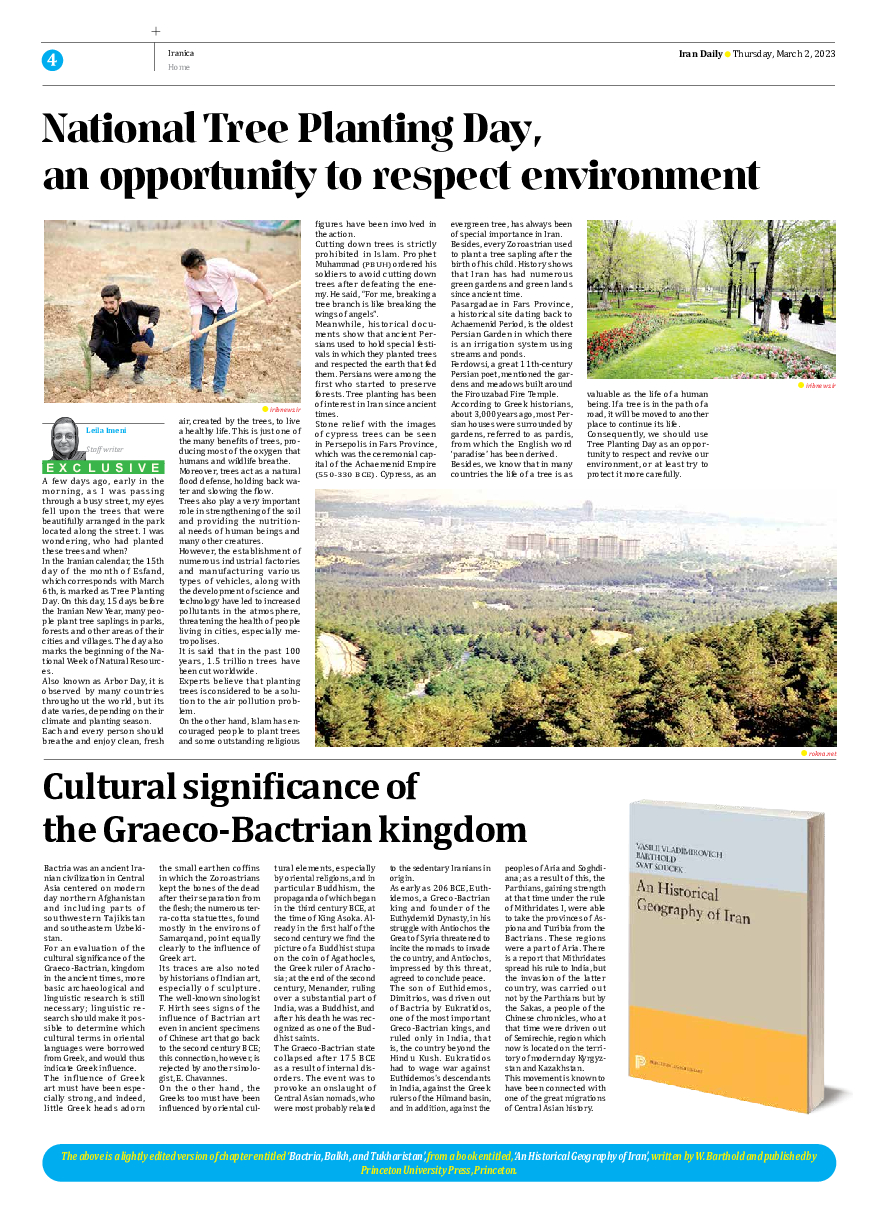
National Tree Planting Day, an opportunity to respect environment
Leila Imeni
Staff writer
A few days ago, early in the morning, as I was passing through a busy street, my eyes fell upon the trees that were beautifully arranged in the park located along the street. I was wondering, who had planted these trees and when?
In the Iranian calendar, the 15th day of the month of Esfand, which corresponds with March 6th, is marked as Tree Planting Day. On this day, 15 days before the Iranian New Year, many people plant tree saplings in parks, forests and other areas of their cities and villages. The day also marks the beginning of the National Week of Natural Resources.
Also known as Arbor Day, it is observed by many countries throughout the world, but its date varies, depending on their climate and planting season.
Each and every person should breathe and enjoy clean, fresh air, created by the trees, to live a healthy life. This is just one of the many benefits of trees, producing most of the oxygen that humans and wildlife breathe.
Moreover, trees act as a natural flood defense, holding back water and slowing the flow.
Trees also play a very important role in strengthening of the soil and providing the nutritional needs of human beings and many other creatures.
However, the establishment of numerous industrial factories and manufacturing various types of vehicles, along with the development of science and technology have led to increased pollutants in the atmosphere, threatening the health of people living in cities, especially metropolises.
It is said that in the past 100 years, 1.5 trillion trees have been cut worldwide.
Experts believe that planting trees is considered to be a solution to the air pollution problem.
On the other hand, Islam has encouraged people to plant trees and some outstanding religious figures have been involved in the action.
Cutting down trees is strictly prohibited in Islam. Prophet Muhammad (PBUH) ordered his soldiers to avoid cutting down trees after defeating the enemy. He said, “For me, breaking a tree branch is like breaking the wings of angels”.
Meanwhile, historical documents show that ancient Persians used to hold special festivals in which they planted trees and respected the earth that fed them. Persians were among the first who started to preserve forests. Tree planting has been of interest in Iran since ancient times.
Stone relief with the images of cypress trees can be seen in Persepolis in Fars Province, which was the ceremonial capital of the Achaemenid Empire (550-330 BCE). Cypress, as an evergreen tree, has always been of special importance in Iran.
Besides, every Zoroastrian used to plant a tree sapling after the birth of his child. History shows that Iran has had numerous green gardens and green lands since ancient time.
Pasargadae in Fars Province, a historical site dating back to Achaemenid Period, is the oldest Persian Garden in which there is an irrigation system using streams and ponds.
Ferdowsi, a great 11th-century Persian poet, mentioned the gardens and meadows built around the Firouzabad Fire Temple.
According to Greek historians, about 3,000 years ago, most Persian houses were surrounded by gardens, referred to as pardis, from which the English word ‘paradise’ has been derived.
Besides, we know that in many countries the life of a tree is as valuable as the life of a human being. If a tree is in the path of a road, it will be moved to another place to continue its life.
Consequently, we should use Tree Planting Day as an opportunity to respect and revive our environment, or at least try to protect it more carefully.







